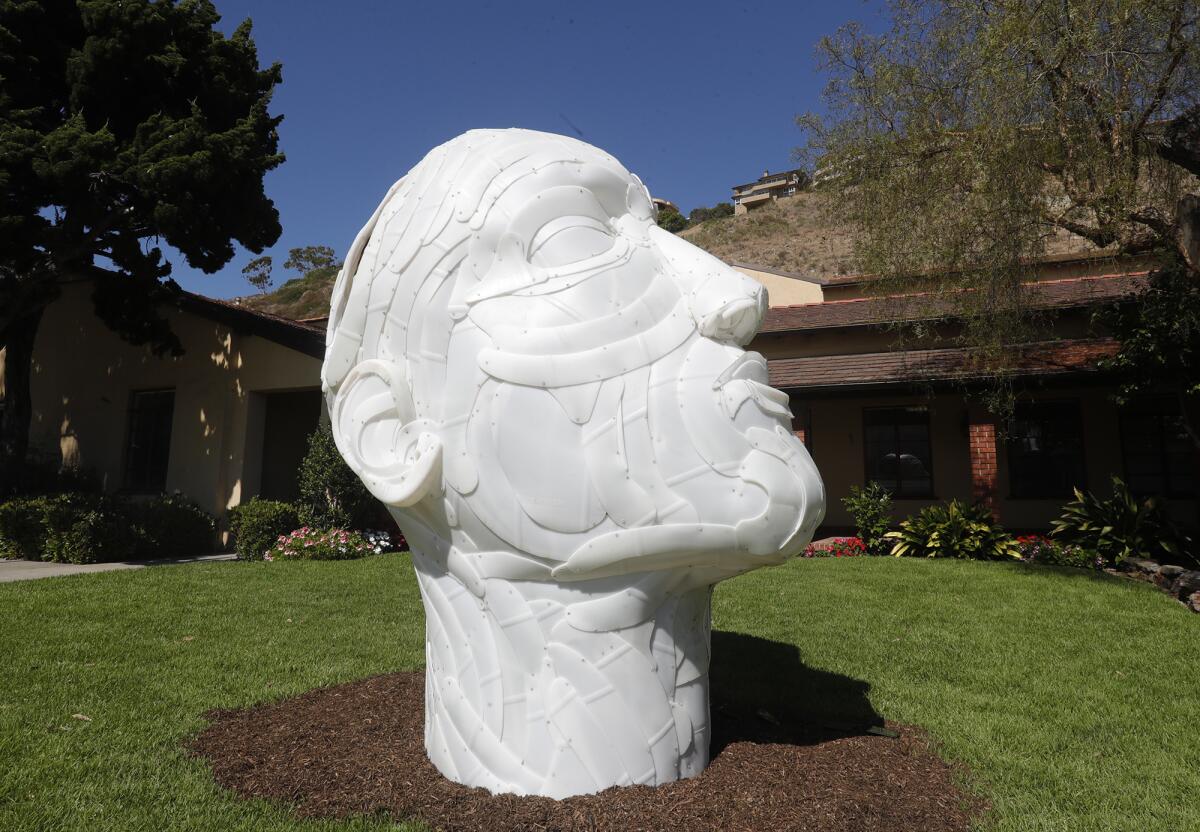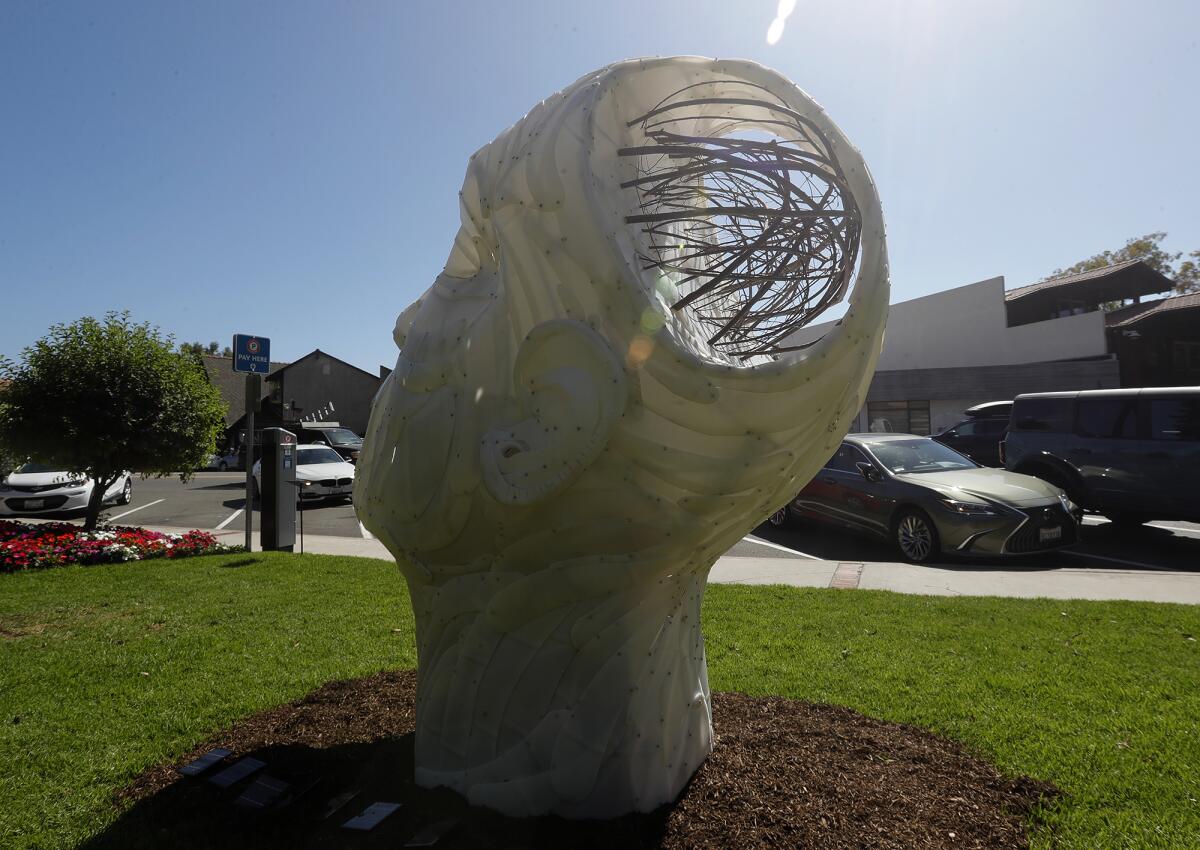Laguna Beach dedicates ‘Inquire Within’ artwork, raising public awareness of plastic use

- Share via
Passersby in front of Laguna Beach City Hall will see a new figure in the weeks to come, one that conspires to change human behavior for a lifetime.
An 8-foot-tall plastic sculpture of a human head has been set upon the lawn, leaving a hole where a brain ought to be. Instead, an assortment of twigs can be found in that space, inviting the viewer to contemplate the impact of their plastic use on the natural world.
Joel Dean Stockdill and Yustina Salnikova are the creators of the latest temporary public art installation to be displayed in front of City Hall. The piece is called “Inquire Within.” A dedication ceremony was held for the artwork Thursday evening.

“The plastic pollution problem is fairly a new one in the grand scheme of human history, and we have really entered into the problem with a mind of convenience,” Salnikova said. “We never really like to only show a problem. We also like to inspire a solution and inspire a way that we can think differently about the problems we have.
“That’s why we put a hole in where the brain should be, and that was symbolism to be able to [say], ‘What if we cleared our minds and listen to nature and see what emerges from there,’ because a lot of the times, we are solutioning from these problems from the same thinking that created them. This piece encourages us to take a step back and look at our perspectives differently and listen, instead of always thinking we know what to do and what the next step is, so that we can actually form new solutions in the future and maybe tackle this plastic problem that we have created.”
Size can send a strong message. The artists are known for their large-scale projects, including a life-size whale made of single-use plastics that ran 84 feet, 11.6 inches in length. That project, known as Ethyl, went down as a Guinness World Record for the largest recycled plastic sculpture.
Stockdill and Salnikova are a rare artistic couple that collaborate on their projects. In his own words, Stockdill referred to the act of creating together as “birthing.”
“After doing this together for seven years, it would be so hard to think about being in a romantic partnership where we weren’t creating together because the depth is so much,” Stockdill said. “It’s very difficult. … Through both of our communities and acquaintances, we know hundreds of artists, but I could probably count all the artist couples I know on one hand, so I think it’s very rare. When you can find that dynamic, or nurture that dynamic, it’s really rewarding. It becomes like the practice of your love.”
The new piece at City Hall has an element of illumination after dark, powered by solar panels. The structure itself was made from recyclable materials, specifically 50-gallon plastic drums.
“I just want to thank the artists because the catalyst for this was a conversation that we had very early on about how to bring plastic awareness to the community in a very meaningful way that will create a conversation,” Laguna Beach Cultural Arts Manager Sian Poeschl said. “I’d like to thank you both because there were many long conversations, … not just with me, but with the arts commissioners, and you listened and you heard, and with sensitivity, you’ve created a piece that offers a sense of hope that we can make a change, and that we should make a change. Hopefully, the community will be discussing how they personally can make a change towards their relationship with plastic.”
All the latest on Orange County from Orange County.
Get our free TimesOC newsletter.
You may occasionally receive promotional content from the Daily Pilot.




